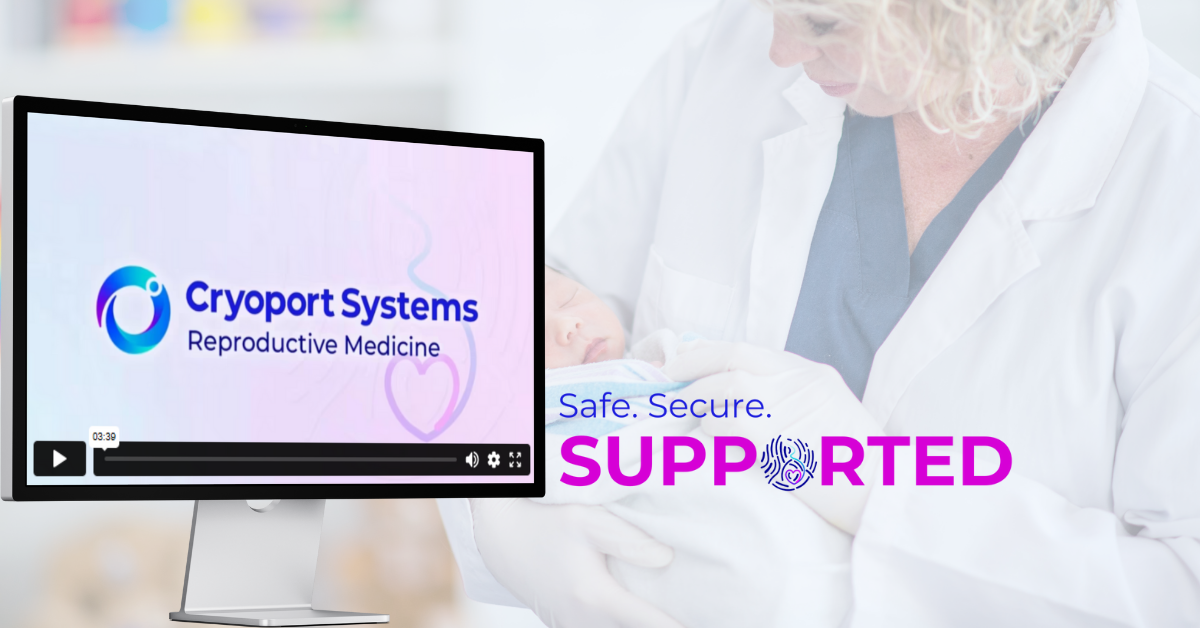Managing Risk at Scale with Lessons from Network Laboratories
Inspired by the recent International IVF Initiative (i3) Webinar, Cryogovernance® VIII, sponsored by Cryoport Systems.
For modern IVF clinic networks, growth is both a measure of success and a new source of complexity. Expanding to multiple clinics and laboratories enables providers to reach more patients and offer consistency in care, but as these networks scale, so do the challenges of maintaining standardization and safety with full traceability across every site.
The rise of multi-site fertility organizations has revealed a simple truth: risk multiplies with scale. Every location adds a new layer of variability with new staff, new workflows, and even new local regulations. For leaders like Dr. Bec Holmes (Corporate Laboratory Director, CCRM Network), the solution lies in systematizing cryogovernance enterprise wide.
As she explained during the Cryogovernance® VIII webinar, “At the network level, the priority is to build systems that reduce variability, increase predictability, and ensure traceability of every sample and specimen across every lab.”
The Complexity of Managing a Distributed Network
Dr. Holmes described the CCRM network’s journey to unify its laboratory operations, saying “It’s time to move…to something that offers more data points, more traceability. And one thing that CCRM did was to think about solutions and who we can work with to offer this traceability, safety, and consistency. I think we’re all very, very well aware that in the U.S. and in other countries (even) more so, we’re becoming very risk averse.”
“Within CCRM clinics (in) 2024, we did around 700 shipments in and out of the CCRM labs with an additional 200 between the labs,” Holms highlighted. “So that’s a lot of shipments going across the country, across from CCRM labs to other CCRM labs, from local labs into CCRM labs, out of CCRM labs. So there’s a lot going in and out. We needed to find a solution that’s going to help us in our day-to-day processes.”
That predictability comes from structure. CCRM has implemented standardization alongside working with verified partners like TMRW Life Sciences and Cryoport Systems, for example. “We’ve found that working with one vendor definitely simplifies that,” Holmes emphasized, mentioning the power of working with a biorepository, or BioR, model. “You’re taking samples away…off-site, and they’re being taken care of at a BioR where their job is to specifically look after samples,” Holmes noted. “They have the expertise and the 24/7 care that we can, that we should, expect for our samples. And the nice thing about…consistently using the same BioR is that they’re still considered our patients. So when we ship to our BioR, they are considered under the umbrella of CCRM still, and I think patients appreciate that.”
The complexity of a network of this scale, however, requires standardization. “When you’re working at a scale like this,” Holmes pointed out, “you want something that is digitalized, a digitalized specimen inventory, both on-site and off-site with traceable shipping.” Holmes pointed to the importance of shipping that offers robust compliance and traceability, “so we know exactly where those samples are and what the temperature and situation of those samples is.”
Scaling risk management requires more than data, it requires culture. Robust governance isn’t about taking control away from local teams, rather it’s about creating a consistent structure to operate confidently within.
Closing the Loop on Logistics
No matter how strong a laboratory’s internal controls are, risk reappears the moment a specimen leaves the building. Shipping remains one of the most vulnerable stages in IVF operations, but is a risk that can be mitigated by partnering with validated providers.
Holmes noted that in a network environment, “Partnering with best-in-class is the way that we work to make sure our samples are going back and forth in a reliable manner.”
For CCRM and other network-based IVF systems, that means partnering with a logistics partner capable of meeting or exceeding the same quality standards applied internally. “So working with a vendor that offers continuous GPS monitoring and temperature monitoring is imperative. All of these factors are going to be reducing our risks,” she emphasized. “And these systems not only safeguard and reduce risk, but also help streamline operations and make sure that each of our labs is meeting the same high standards that we can offer to our patients.”
Managing risk at scale is not about minimizing growth but about structuring it. Cryogovernance enables IVF networks to transform expansion into an asset rather than a liability.
When laboratories share standardized workflows, unified data systems, and strong partnerships with biorepositories and logistics providers, every site becomes stronger and patients benefit from a uniform level of care and safety.
How Cryoport Systems Supports Network-Level Governance
Cryoport Systems helps IVF networks achieve consistency through end-to-end logistics solutions designed for scale. Our reproductive medicine platform provides:
- Validated cryogenic shipping systems that offer standardized support across every clinic in the network, ensuring temperature stability and shipment reproducibility
- Continuous GPS and condition monitoring for visibility into every transit event, regardless of distance or region
- Comprehensive Chain of Compliance® that integrates with laboratory and biorepository workflows, ensuring full traceability for audits and quality systems
By embedding logistics within the broader governance architecture, Cryoport Systems enables IVF networks to extend their standards of safety and traceability far beyond the laboratory.
As IVF continues to expand globally, managing risk at scale will define the next era of fertility care.
Networks like CCRM are proving that large-scale operations can not only maintain quality but enhance it, leveraging a unified, partnership-oriented approach to cryogovernance.
With the right systems and partners in place, scale doesn’t have to mean compromise. It can mean strength and resilience, providing a new standard in reliability for clinics and the patients whose hopes rest in our collective hands.


